Washington, the Evergreen State, is a destination that offers endless adventures. Encompassing the rugged Pacific coast, unspoiled temperate rain forests, numerous glaciers, and the waterfalls and volcanoes of the Cascade Range, the three national parks in Washington State are world-class outdoor playgrounds.
In addition to the tripartite of Washington national parks—Olympic, Mount Rainier and North Cascades—there are almost a dozen other National Park Service (NPS) units in the state.
Together, they preserve the region’s spectacular natural resources, as well as tons of cultural and historical heritage, from Native American sites to pioneer history.
In this blog post, I feature all fifteen NPS units in Washington. The focus, obviously, lies on the three actual national parks in Washington State. They’re nothing less than the jewels in Washington’s natural crown.
For the sake of thoroughness, though, I also briefly talk about all other Washington National Park Service units, most of which preserve some kind of historic site or area.
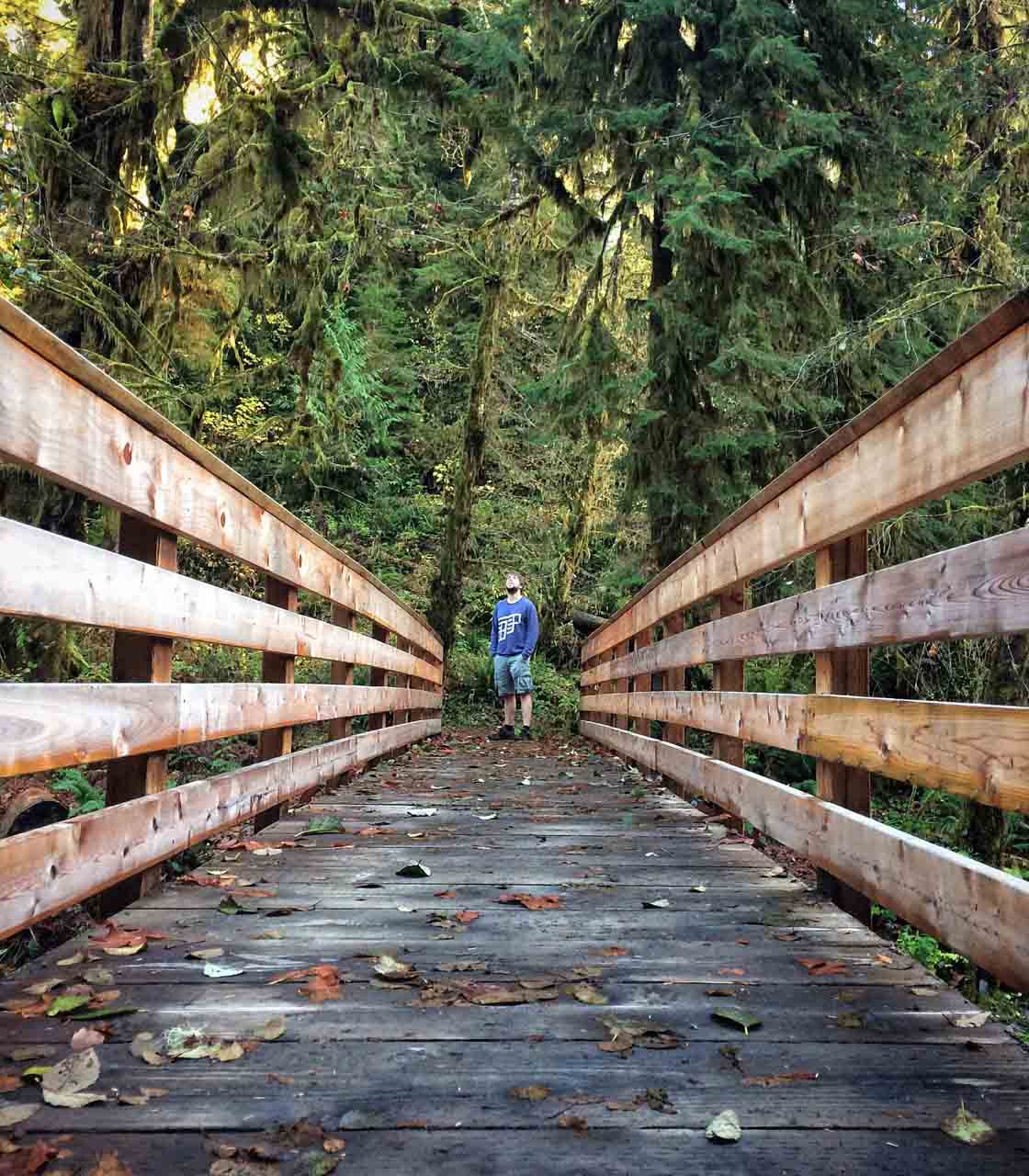
This national parks in Washington State post contains affiliate links. You can read more about our Terms of Use / Disclosure here.
Contents
The 3 National Parks in Washington State
Remarkably, all three national parks in Washington are near Seattle, each of them located in another direction from the city. Olympic lies to the west of Seattle, Mount Rainier to the southeast and North Cascades to the northeast.
I’m not saying they’re at the city’s doorstep, but they’re also not more than three hours away by car, depending on traffic conditions.
So, if you’re looking for the best national parks near Seattle, you’ll be thrilled to know that all three Washington national parks are essentially right there!
You wouldn’t necessarily need more than a day to visit (a part of) any one of them, but I do strongly recommend giving yourself at least two days to visit each park.
I’m a strong advocate for spending a night or two in any national park, especially such varied, large and accessible parks as Olympic National Park and Mount Rainier National Park.
Olympic National Park
85 miles / 3 hours from Seattle (including short ferry ride)
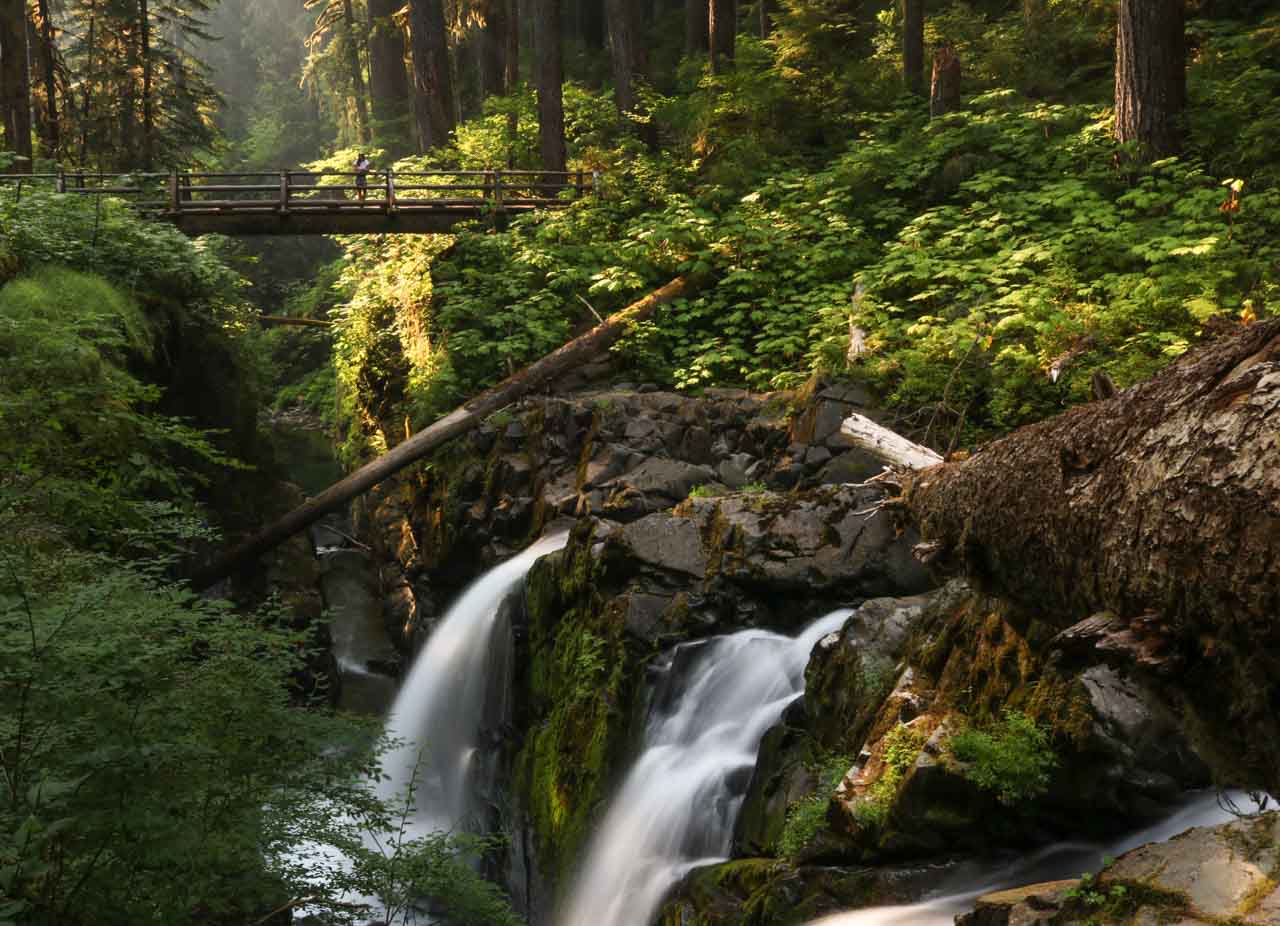
The westernmost national park in the lower 48 states, Olympic National Park is a pristine wilderness unlike any other on earth.
Often called “three parks in one”, its ecological variety is of importance that the park is both an International Biosphere Reserve and a UNESCO World Heritage Site.
Even though this is the closest national park near Seattle, geographically speaking, it’s also one of the last truly wild places in America (with the exception of Alaska, of course). Olympic National Park encompasses almost a million acres of mountains, temperate rain forests, lakes, waterfalls and coasts.
The park’s heart and namesake is 7,980-foot (2,432-meter) Mount Olympus, dominating the mountain ranges in the interior of the Olympic Peninsula.
Glaciers radiate down from its slopes toward primeval pine forests, lush rain forests and wide valleys. Rivers and waterfalls abound in this rugged region, while glacial lakes dot lower areas. A wide range of wildlife and bird species thrive here as well.
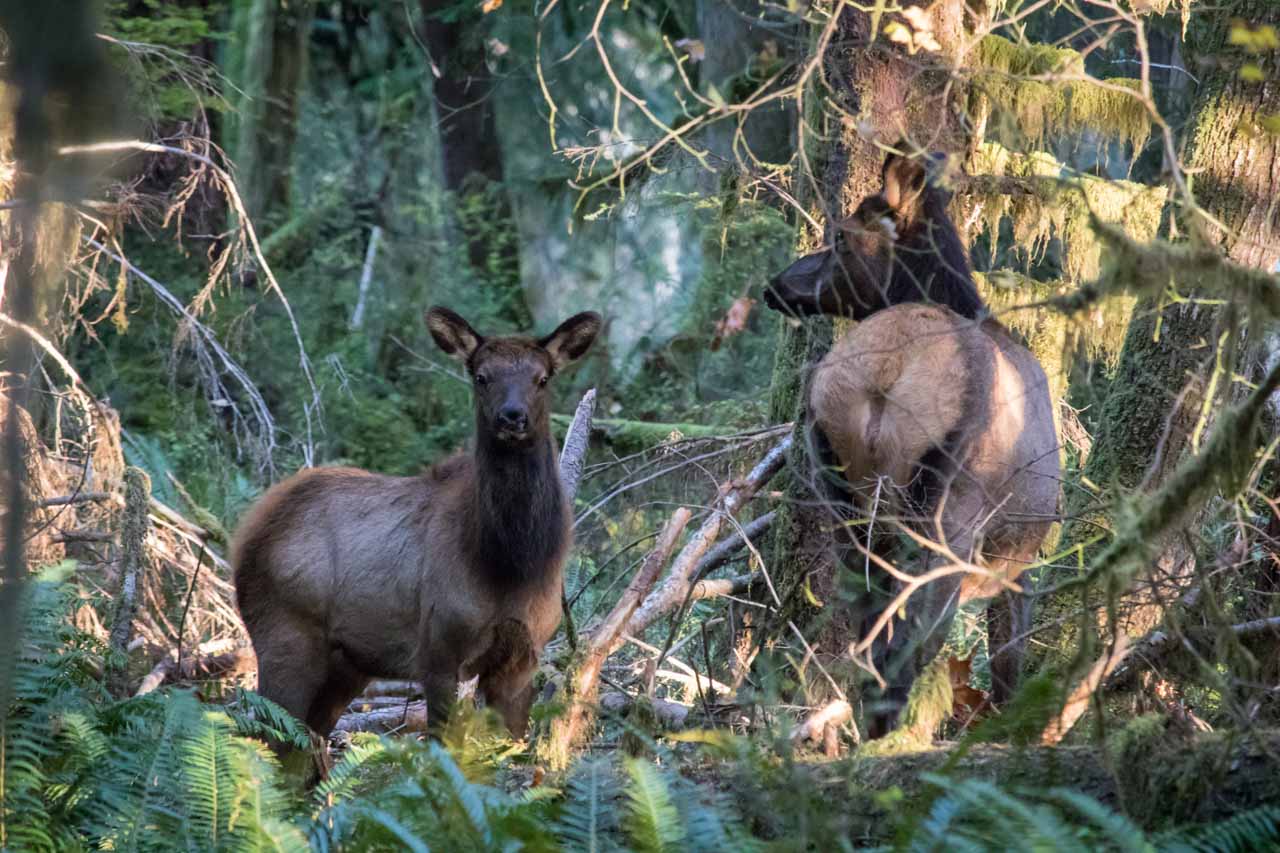
There is enough natural beauty in the Olympic Mountains alone to make it worthy of being a national park on its own. Yet, Olympic National Park’s diversity doesn’t end there. Arguably the park’s most extraordinary feature is its temperate rain forests.
On the western slopes of the mountains, thick blankets of moss drape towering trees. Carpets of ferns cover the forest floor. Mist lingers in the air. This is one of only a few temperate rain forests left in the world. Other major ones are in New Zealand, Tasmania and Patagonia.
Moreover, the combined areas of the Hoh, Queets and Quinault Rain Forests are also the largest rain forest of its kind on earth.
Its mosses and decaying plant matter form cushions that absorb all sound, making this arguably America’s quietest place. This absolute, pristine quietness is one of the greatest Olympic National Park highlights.
And what makes this arguably the best national park in Washington State—it’s definitely my favorite—is its third ecosystem. The third part of Olympic National Park, separated from the two above, is the wild Pacific Northwest coast.
A narrow 73-mile-long (117 kilometers) strip of coastal forests, beaches and rock formations, this is the one of longest undeveloped stretches of coastline in the contiguous USA. It’s known appropriately as “The Wilderness Coast.”
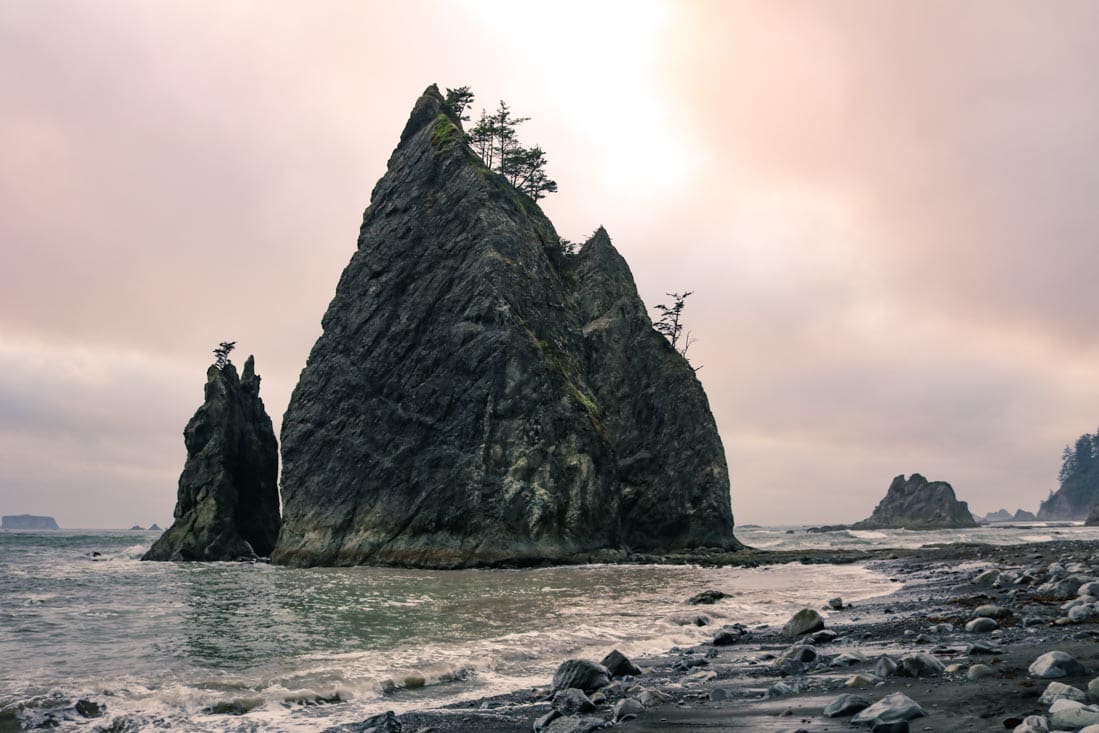
It’s these three massively different areas that make this one of the greatest U.S. national parks. The sheer number of places to see in this park is also why you will need at least three days in Olympic National Park. Check out some easy hikes in Olympic here.
If I had to choose between all three national parks in Washington State, I’d pick Olympic simply because of its amazing diversity and abundant, varied wildlife.
One full day for each environment is necessary to do the park justice—at the bare minimum.
- Recommended Stay: 4 days / 3 nights
- Where to Go: Hurricane Ridge, Sol Duc Falls, Lake Crescent, Hoh Rain Forest, Quinault Rain Forest, Ruby Beach and Rialto Beach
- Things to Do: hiking, hot springs, boating, wildlife viewing and camping
- Wildlife to See: Roosevelt elk, bald eagles, hoary marmots, black bears, whales and orcas
- Website: https://www.nps.gov/olym/index.htm
- Recommended Hiking Guide: Falcon Guides’ Hiking Olympic National Park
Mount Rainier National Park
85 miles / 2.5 hours from Seattle
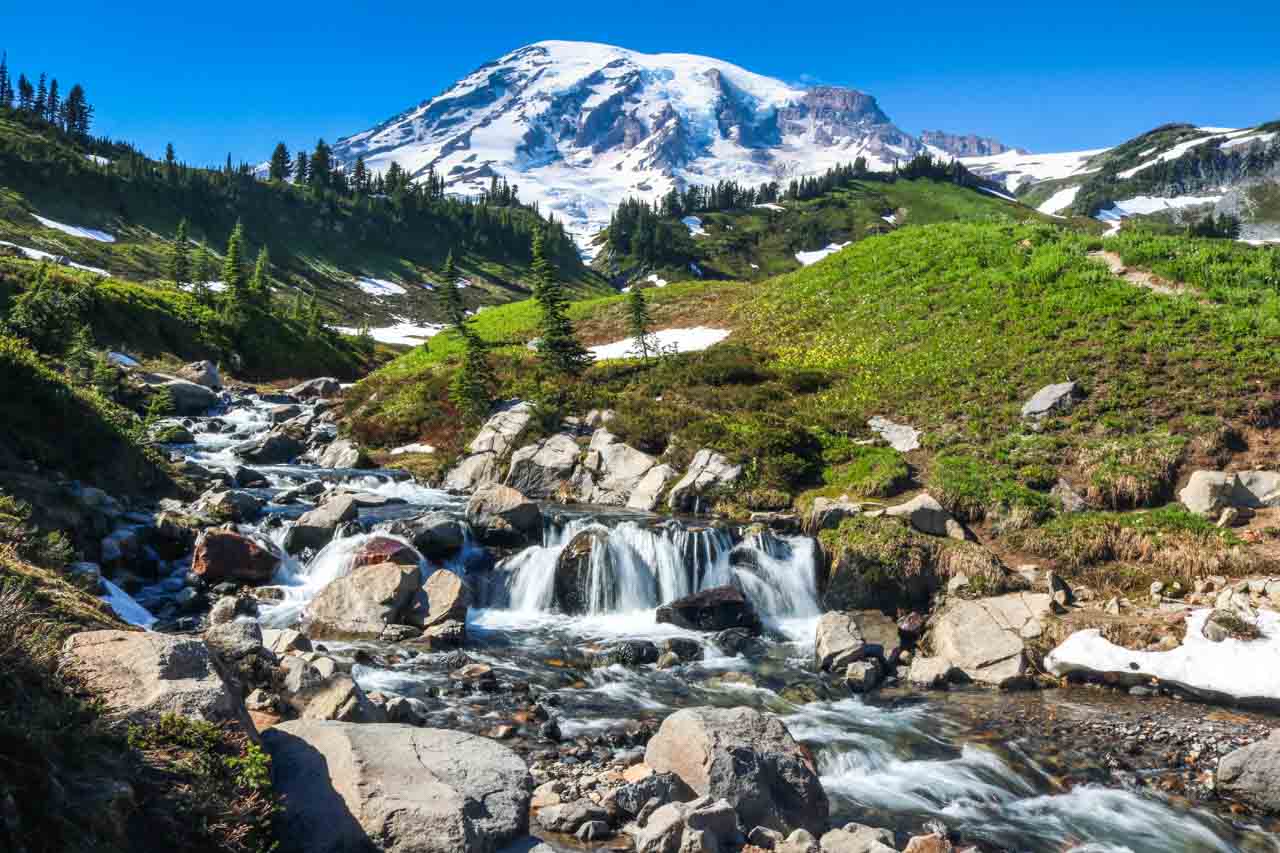
Reaching 14,411 feet (4,392 meters) toward the heavens, Mount Rainier is the tallest mountain in Washington State and in the Pacific Northwest’s Cascade Range.
This massive stratovolcano dominates the Washington landscape, rising abruptly from the surrounding mountains and countryside.
No other mountain in the lower 48 states is as topographically prominent as Mount Rainier. If you’re looking for a super-impressive volcano in a national park, Mount Rainier is one of your most accessible options.
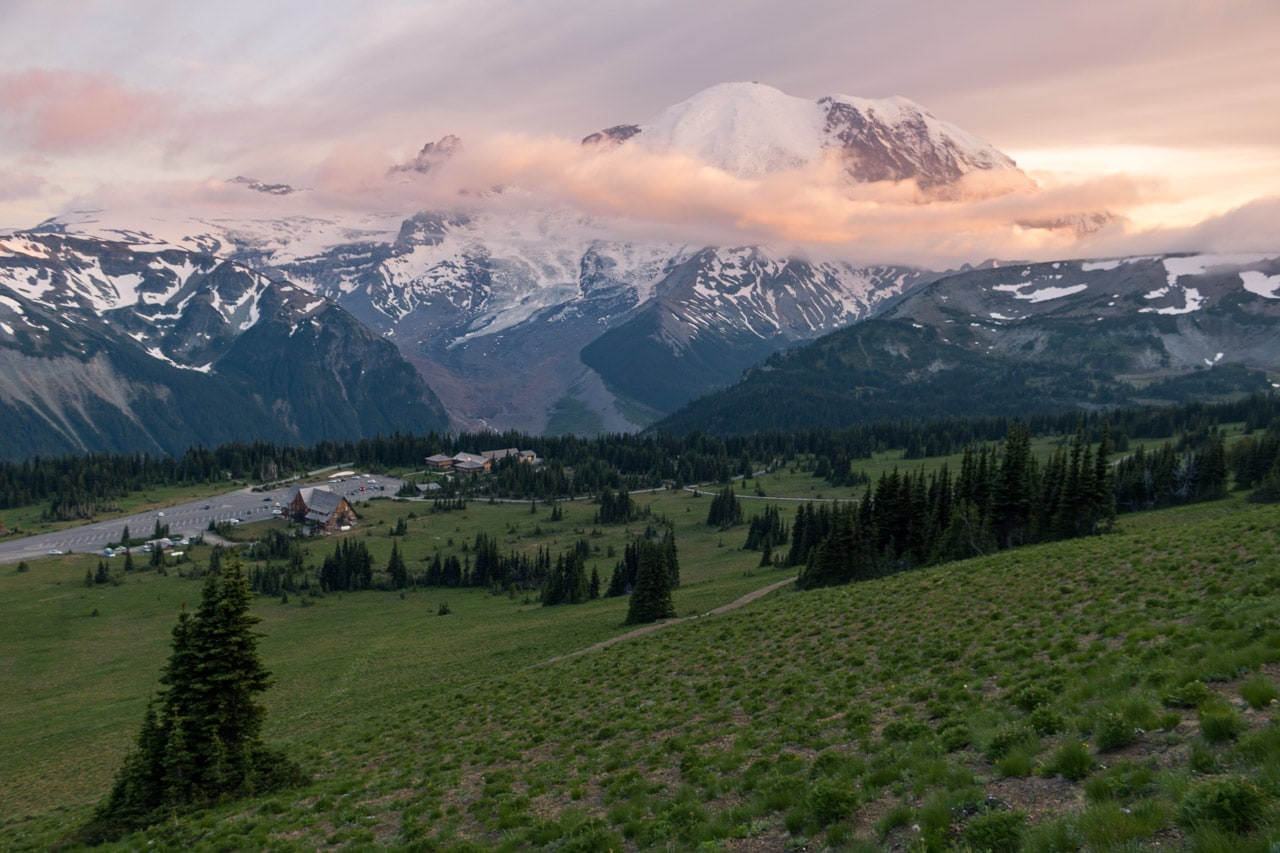
Additionally, the mountain also has the most glaciers of any mountain in the contiguous United States.
It’s the source of five major rivers in the region and the centerpiece of Mount Rainier National Park, one of the three spectacular national parks in Washington.
The huge volume of ice on its glaciers combined with volcanic activity and the proximity to a large city like Seattle makes it one of the world’s sixteen most dangerous volcanoes, known collectively as the “Decade Volcanoes”.
Called Tacoma by Native Americans, it is the star attraction in Mount Rainier National Park. In addition to breathtaking landscapes, you’ll find a plethora of other attractions in this Washington State national park, a hiker’s paradise.
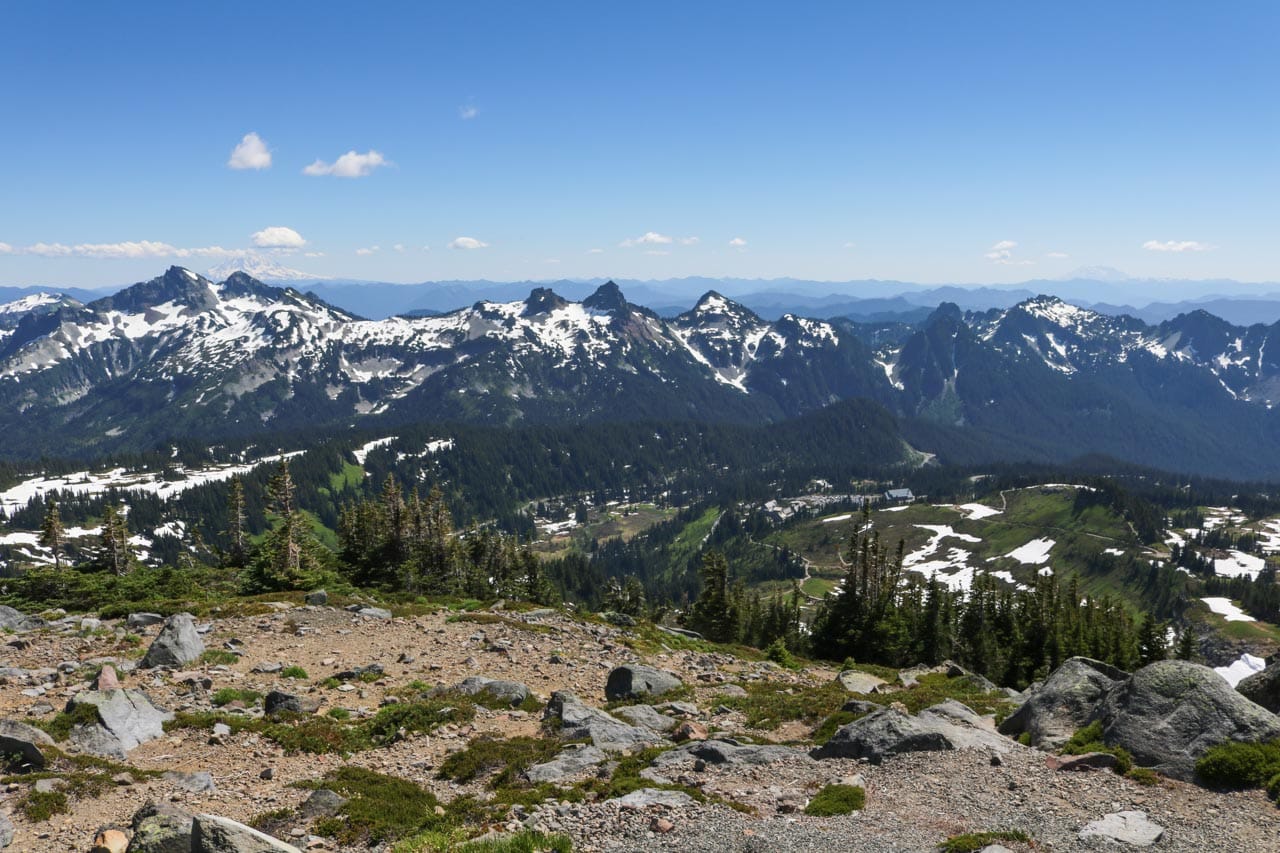
There are wonderful Mount Rainier waterfalls, epic hiking trails, an abundance of wildlife, spectacular summer wildflower displays, beautiful fall colors, and awesome winter activities.
It makes for a great Pacific Northwest road trip destination from both Portland and Seattle.
- Recommended Stay: 3 days / 2 nights
- Where to Go: Longmire, Paradise, Ohanapecosh, Tipsoo Lake, Sunrise
- Things to Do: hiking, cycling, camping, wildlife watching and wildflower viewing
- Wildlife to See: black bears, elk, mountain goats, black-tailed deer, Cascade red foxes
- Website: https://www.nps.gov/mora/index.htm
- Recommended Hiking Guide: Falcon Guides’ Hiking Mount Rainier National Park
North Cascades National Park
105 miles / 3 hours from Seattle
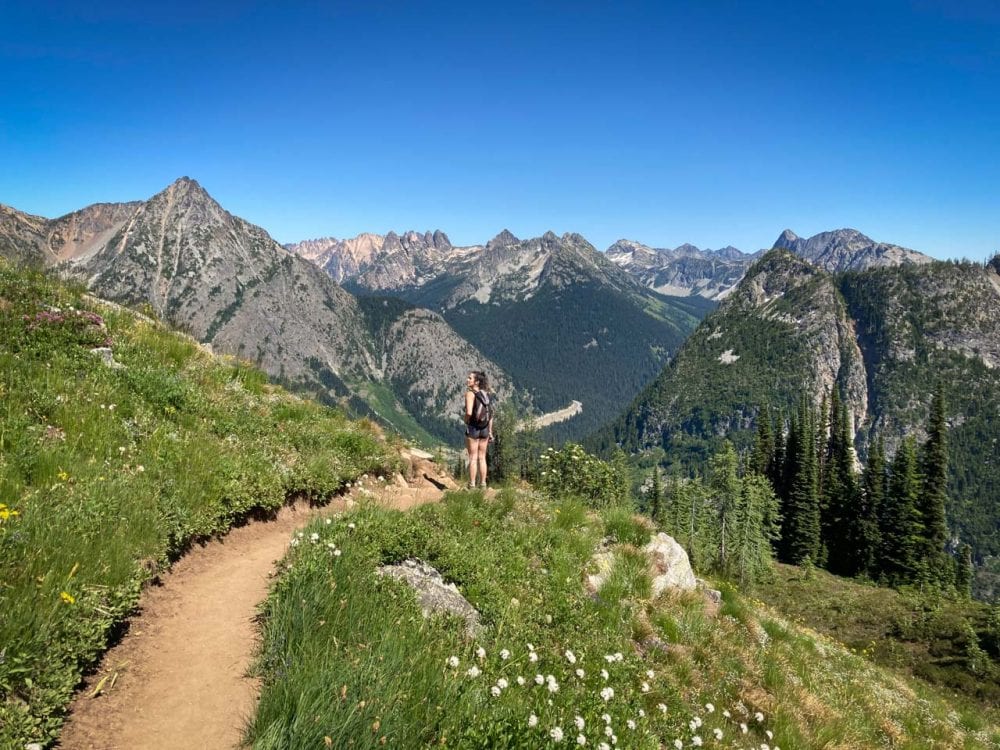
Very few other contiguous U.S. national parks can make you feel like you’re the only person on earth quite like North Cascades National Park.
In North Cascades, home to huge tracts of unspoiled wilderness, rugged mountains and pristine lakes, finding adventure and solitude is a piece of cake.
Even though it lies only three hours by car from downtown Seattle, the park boasts some of the most spectacular and remote wilderness areas south of Canada and Alaska.
North Cascades is also among the least-developed national parks in the U.S., crossed only by scenic Route 20 and home to only a few small towns.
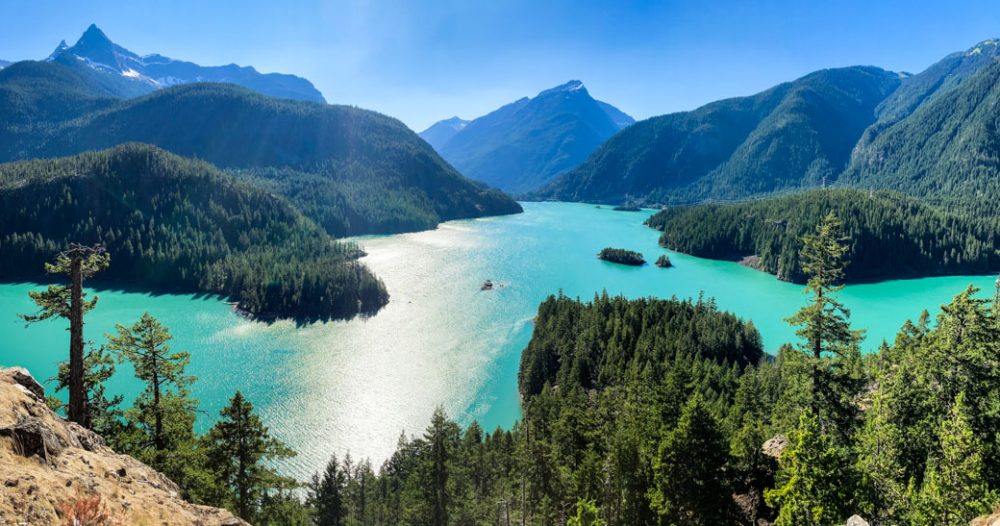
This park is home to more than 300 glaciers. Amazingly, that’s a third of all glaciers in the lower 48 states! This massive amount of ice feeds countless rivers and lakes, occupying upper slopes and flowing through lower valleys.
The landscapes in North Cascades National Park are also beautifully diverse. They include towering mountain peaks, as well as also thundering waterfalls and old-growth forests.
Attracting fewer than 30,000 visitors each year, this park, despite its accessibility, is all about isolation and solitude. A weekend exploring its landscapes, driving around in a car and hitting a couple of trails is perfect to get a real feel for this wilderness park.
Its main features are endless series of sawtooth-like peaks, stunningly blue alpine lakes, and lots of wildlife.
In fact, this is one of only a few national parks that have grizzly bears in the lower 48 states. That said, though, the North Cascades grizzly bear population is really small and sightings are very uncommon.
Other high-profile mammals that call these mountains home include gray wolves, black bears, mountain lions, elk, mountain goats and wolverines.
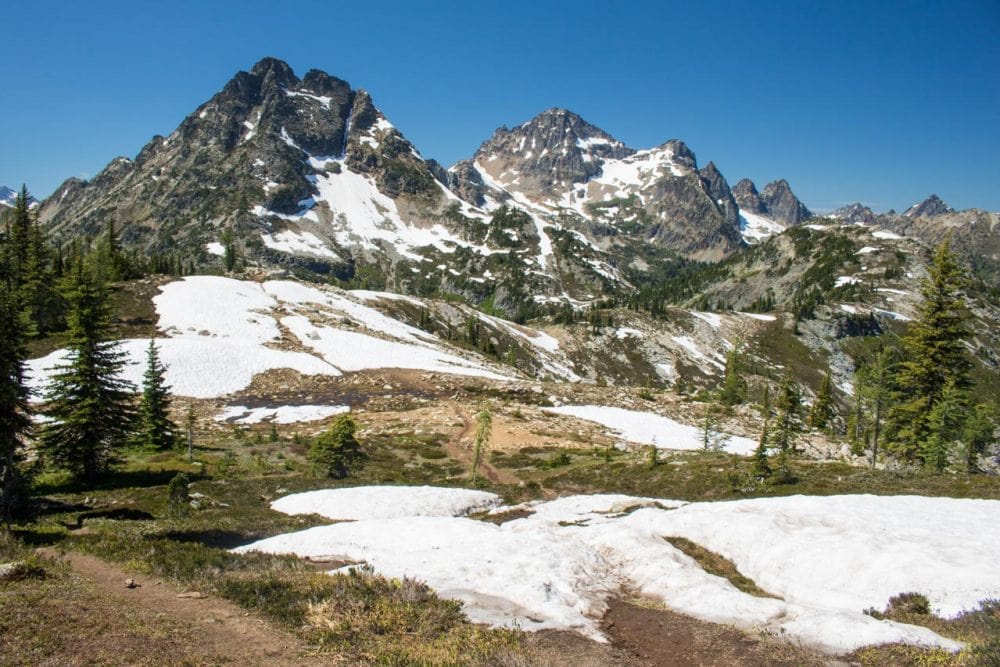
This vast national park complex consists of North Cascades National Park itself, but also comprises of the Ross Lake Recreation Area and the Lake Chelan National Recreation Area.
Of all three national parks around Seattle, Washington, this is where you’d want to go for solitude, wilderness and an away-from-the-crowds Washington national parks experience.
- Recommended Stay: 2 days / 2 nights
- Where to Go: Stehekin, Diablo Lake and Ross Lake
- Things to Do: hiking, backpacking, camping, boating, cycling and wildlife viewing
- Wildlife to See: black bears, elk, black-tailed deer, hoary marmots, American pika and (very rarely) grizzly bears
- Website: https://www.nps.gov/noca/index.htm
- Recommended Hiking Guide: Falcon Guides’ Hiking the North Cascades
Further Reading:
- What to Do When Encountering a Grizzly Bear
- What to Do When Encountering a Black Bear
- What to Do When Encountering a Mountain Lion or Cougar
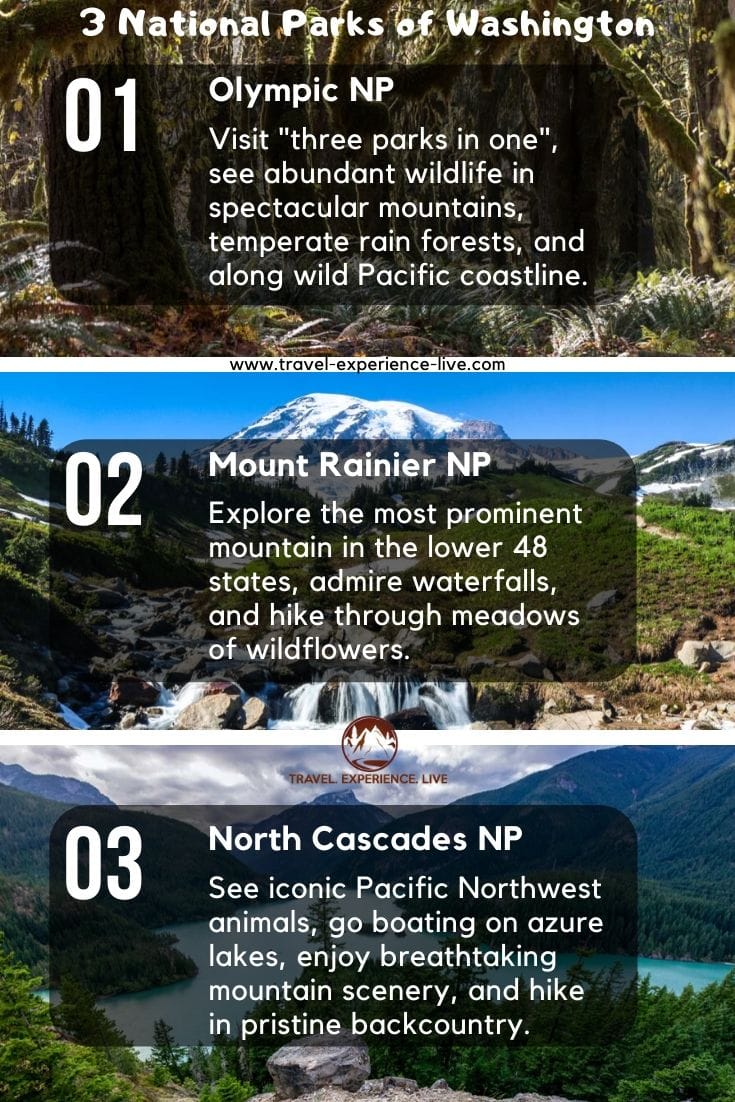
Other National Park Service Units Near Seattle, Washington
In addition to the triple crown of national parks in Washington, there are also three other National Park Service units in or around Seattle.
Klondike Gold Rush National Historical Park – Seattle Unit
When the Klondike Gold Rush hit in the late-19th century, Seattle became a major port city, supplying and sending off hopeful gold-miners toward Alaska.
These years are what established Seattle as a major city in the American Northwest. Nowadays, this historical park takes you back to those days of hopes and hardships, dreams and disappointments.
Ebey’s Landing National Historical Reserve
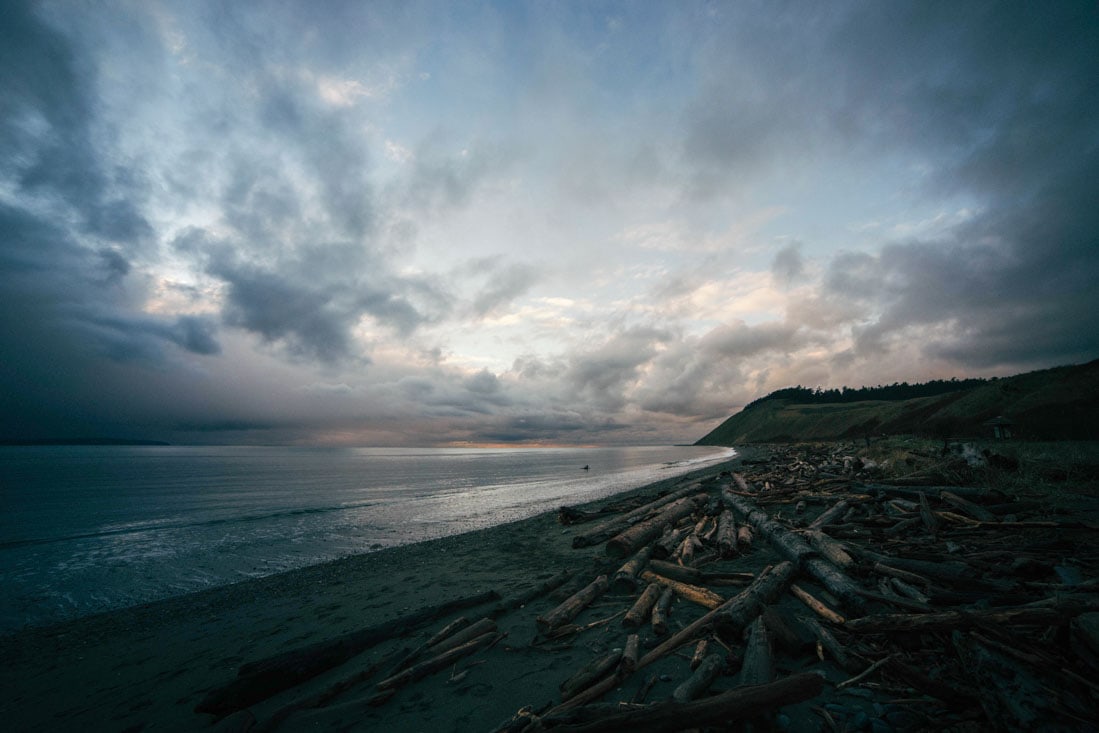
Fertile farmlands and an excellent natural harbor drew some of America’s earliest Pacific Northwest pioneers from the Columbia River to the Puget Sound.
They settled at Ebey’s Landing, which now preserves the cultural, historical and agricultural heritage of Native American and European-Americans alike.
San Juan Island National Historical Park
One of the greatest National Park Service sites near Seattle that aren’t an actual national park, San Juan Island National Historical Park offers superb outdoor activities and fascinating history.
In 1859, the United States and Great Britain almost started a war over possession of San Juan Island, a crisis that got started by—of all things—the death of a pig.
Nowadays, San Juan Island is as peaceful as can be, featuring great views, beautiful shores and, above all, fantastic orca or killer whale viewing opportunities.
Washington National Park Service Units Elsewhere in the State
If you’d like to visit even more Washington State National Park Service units, you can go beyond the Seattle day trip radius and visit some of the following places for a proper Washington national parks road trip.
Fort Vancouver National Historic Site
Situated on the Columbia River’s northern bank in present-day Vancouver, just across the river from Portland, Oregon, Fort Vancouver National Historic Site highlights the story of pioneers, settlers, Native Americans and explorers.
It’s located at the site of a former frontier fur trading post, which grew into a powerful military fort.
Lake Roosevelt National Recreation Area
The 1941 construction of the Grand Coulee Dam on the Columbia River created a lake spanning 130 miles from the dam toward the Canadian border.
Lake Roosevelt, named after President FDR, offers some wonderful fishing, swimming, boating, camping and hunting opportunities.
The recreation area also includes St. Paul’s Mission, an Indian Jesuit mission dating from 1847.
Lewis and Clark National Historical Park
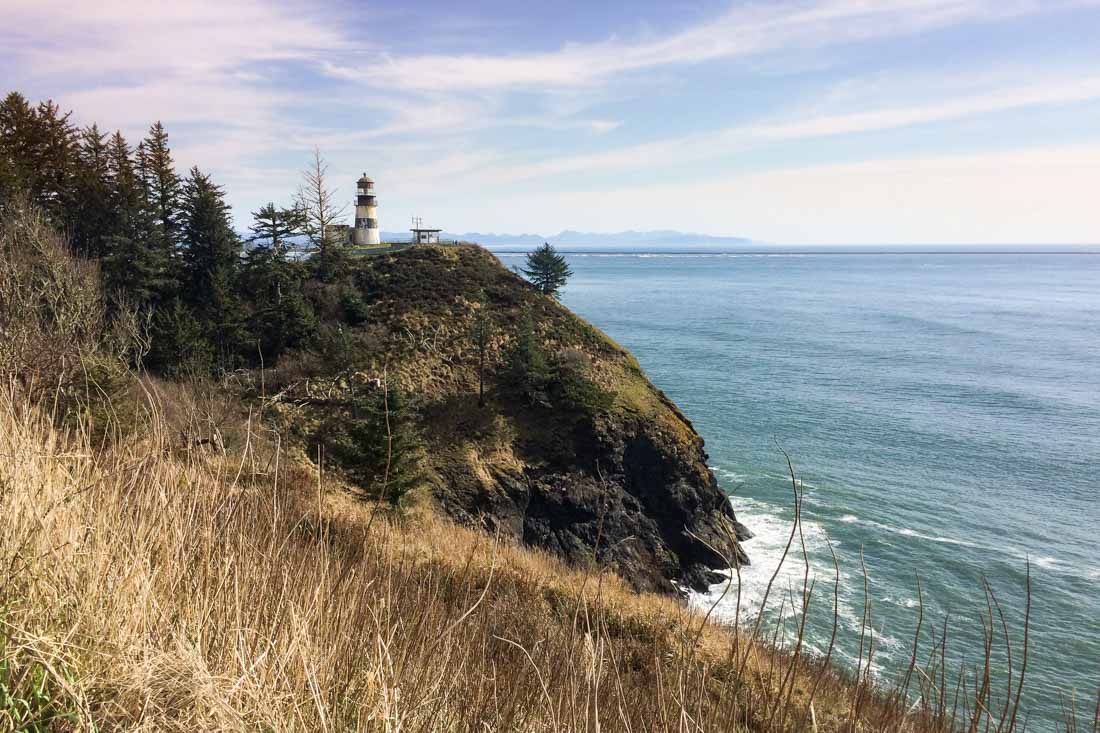
Retelling the story of arguably America’s most famous pair of homegrown explorers, this park consists of several sites along both the Pacific Coast and the Columbia River.
It also commemorates the rich heritage of Native Americans who once lived on the majestic coasts and in the pristine rain forest of Washington and Oregon.
While the main sites lie across the border in Oregon, specifically Fort Clatsop, you can discover the Washington part of the story at Cape Disappointment State Park.
Nez Perce National Historical Park
As the NPS website says, this is a non-traditional national park because it’s made up of no fewer than 38 individual sites. All those sites are spread across four U.S. states: Idaho, Montana, Oregon and Washington.
Together, they tell the story of the Nez Perce, who, for thousands of years, lived and thrived on the plains and plateaus and in the valleys and mountains in the inland Pacific Northwest.
Most of the sites that make up Nez Perce National Historical Park lie in Idaho, but there are also a couple of the far southeastern corner of Washington State. These are the furthest National Park Service sites from Seattle.
Manhattan Project National Historical Park
The Manhattan Project National Historical Park consist of three units in three different states—Los Alamos in New Mexico, Oak Ridge in Tennessee and Hanford in Washington.
This Washington National Park Service site recounts the story of everything that resulted in the creation of the atomic bomb, including the people, science, engineering and events.
Whitman Mission National Historic Site
The Whitman Mission massacre of 1847 sent shockwaves across the United States and is still controversial to this day.
Washington missionary Marcus Whitman, his wife and eleven other people were killed by members of the Cayuse tribe who held Whitman, who’d been part of the very first Oregon Trail wagon train to reach the Columbia River, responsible for numerous Native American deaths caused by measles.
Was it a justified response to intrusion and deaths caused by white settlers? Or was it an act of vengeance toward a pioneering hero?
You can draw your own conclusions after a visit to the Whitman Mission National Historic Site in Walla Walla, southeastern Washington.
National Trails in Washington State
Retracing significant events in U.S. history, America’s national trails often span several different states.
In fact, those events usually occurred even before the United States was a country, or before certain regions became part of the country.
Sites of three separate national trails dot southern Washington, related to such various events as Ice Age floods and pioneering wagon trains.
Lewis & Clark National Historic Trail
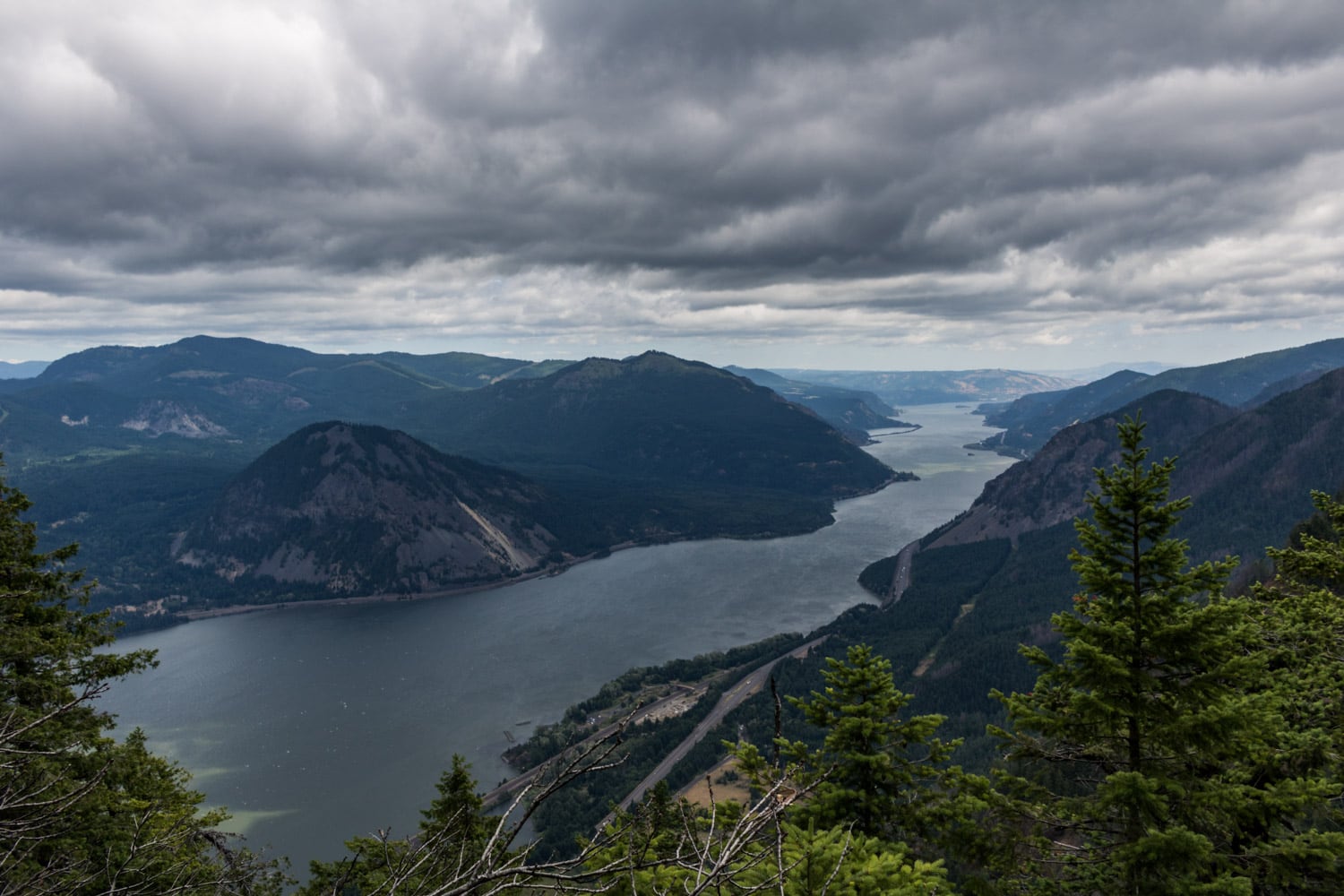
Not to be confused with the Lewis and Clark National Historical Park I’ve mentioned above, the Lewis & Clark National Historic Trail spans an incredible 4,900 miles no fewer than sixteen states.
It runs from Pittsburgh, Pennsylvania to the mouth of the Columbia River near Astoria, Oregon.
While driving along the north bank of the Columbia River in western Washington, you’ll see various historical markers indicating significant Lewis and Clark-related sites.
Oregon National Historic Trail
After the Lewis and Clark Expedition had found a route to the Pacific Ocean, the Oregon Trail brought thousands of pioneers to the American West.
Those intrepid travelers, whether guided by delusional dreams or determined entrepreneurship, typically journeyed from the Great Plains to Oregon’s Willamette Valley.
Just like the Lewis & Clark Trail above, the Oregon National Historic Trail consists of various sites spread across thousands of miles and several states.
The Washington sites are along the Columbia River on the section between The Dalles, Oregon and Vancouver, Washington, which incidentally is also home to the Fort Vancouver site.
Ice Age Floods National Geological Trail
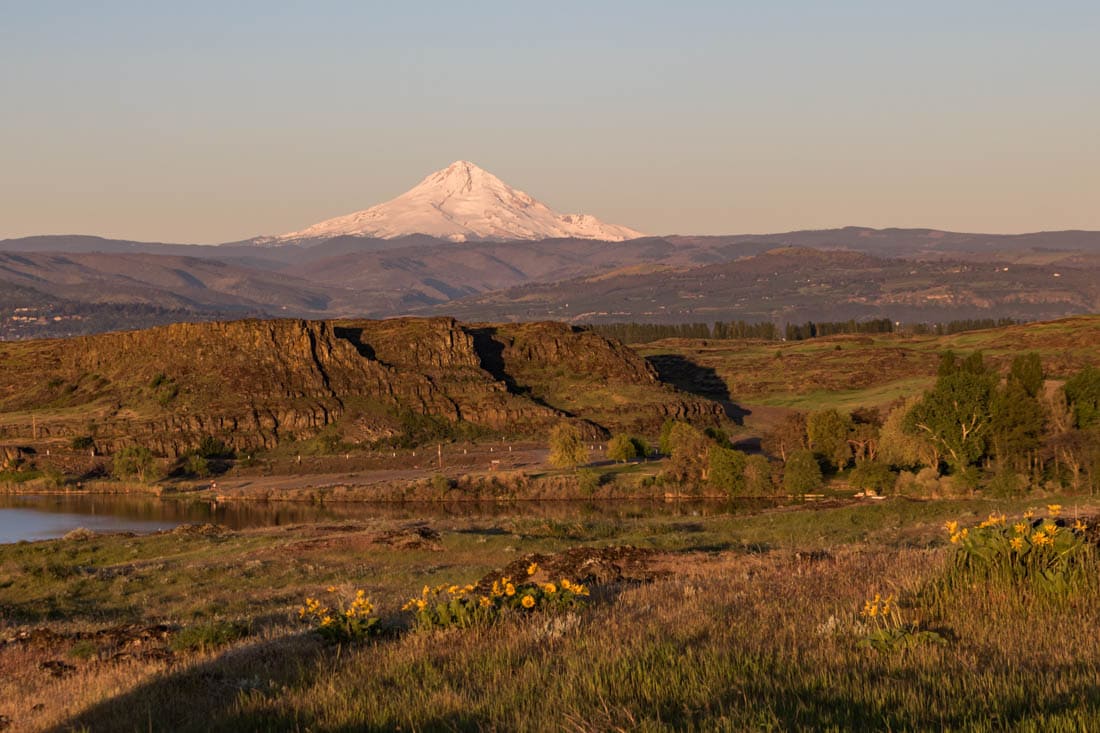
Between 17,000 and 12,000 years ago, during the end of the last Ice Age, massive floods of a scale beyond imaging occurred in the region that’s now the northwestern United States.
Those enormous flows of water left their marks on the landscape, which you can now see at the Ice Age Floods sites.
Washington State has the most of these sites. Some of them are in the southeastern part of the state, notably famous Palouse Falls, but the most accessible are, once again, along the Columbia River.
You can see the results of those massive Ice Age floods at Beacon Rock State Park and Columbia Hills State Park, both a day trip away from Portland, Oregon.
